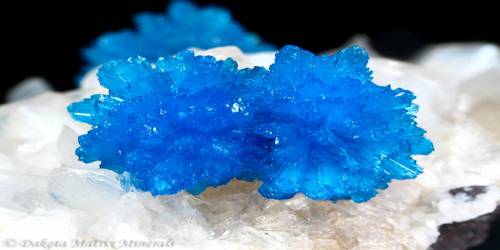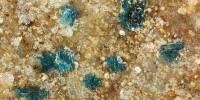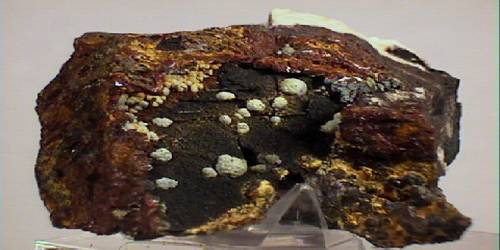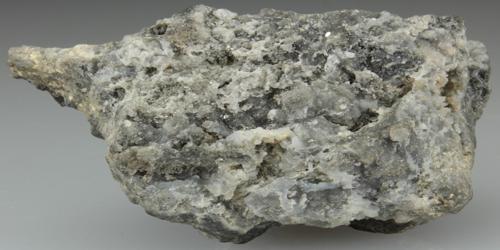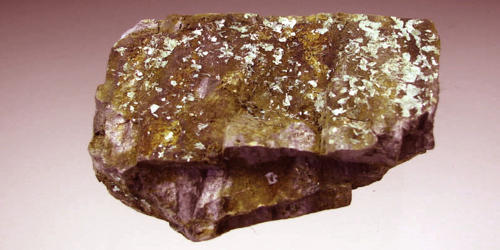Cavansite, whose name is derived from its chemical composition, calcium vanadium silicate, is a deep blue hydrous calcium vanadium phyllosilicate mineral, occurring as a secondary mineral in basaltic and andesitic rocks along with a variety of zeolite minerals. It is a beautiful and rare mineral. It was only discovered in the last 30 years and is found in only a few localities.
Discovered in 1967 in Malheur County, Oregon, cavansite is a relatively rare mineral. It is polymorphic with the even rarer mineral, pentagonite. It is most frequently found in Pune, India and in the Deccan Traps, a large igneous province.
General Information
- Category: Silicate mineral
- Formula: Ca(VO)Si4O104(H2O)
- Crystal system: Orthorhombic
- Crystal class: Dipyramidal (mmm)
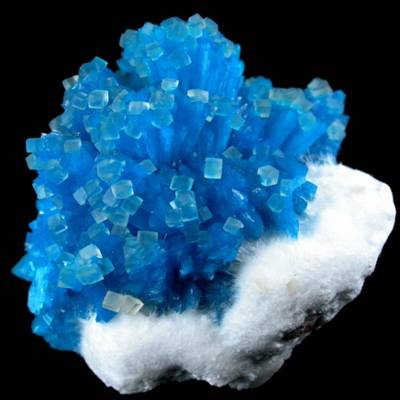
Properties
- Color: Brilliant sky-blue to greenish blue
- Crystal habit: Radiating acicular prismatic crystals commonly as spherulitic rosettes
- Tenacity: Brittle
- Mohs scale hardness: 3 – 4
- Luster: Vitreous, pearly
- Streak: Bluish-white
- Diaphaneity: Transparent
- Specific gravity: 2.25 – 2.33
Cavansite is a distinctive mineral. It tends to form crystal aggregates, generally in the form of balls, up to a couple centimeters in size. Sometimes the balls are coarse enough to allow the individual crystals to be seen. Rarely, cavansite forms bowtie-shaped aggregates. The color of cavansite is distinctive, almost always a rich, bright blue. The color is the same as its dimorph, pentagonite, but the latter is generally much more spikey with bladed crystals. Finally, the associated minerals are used for identification, as cavansite is frequently found sitting atop a matrix of zeolites or apophyllites.
Information Source:
